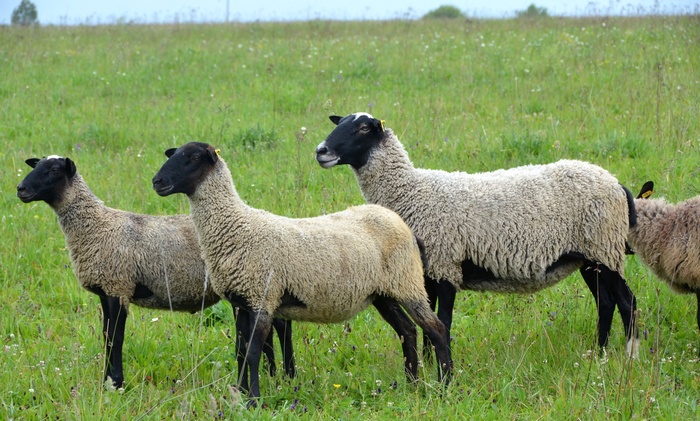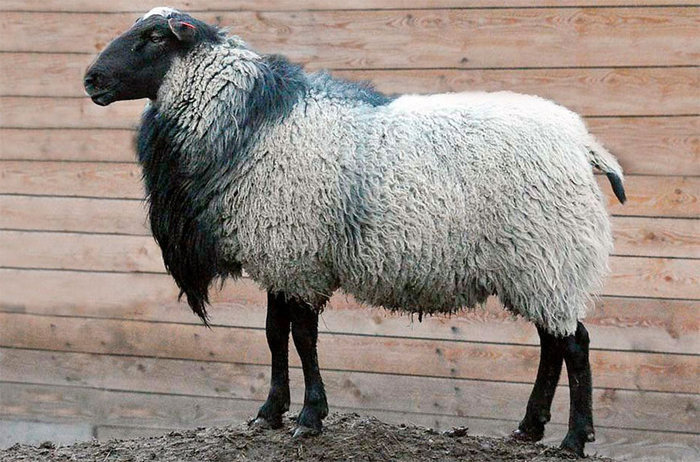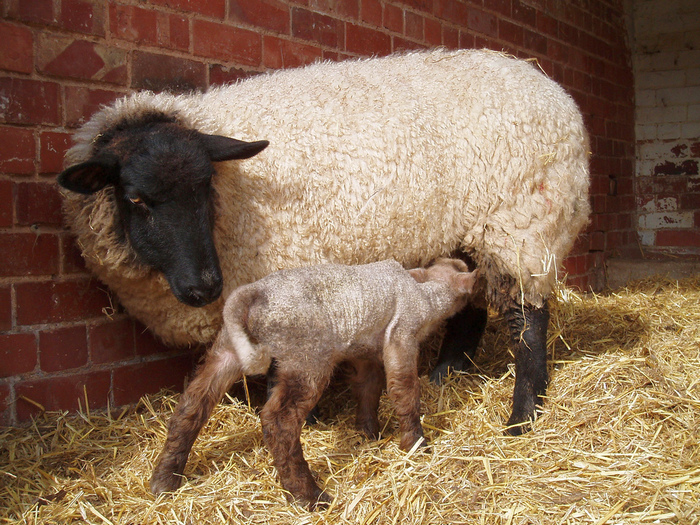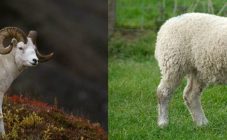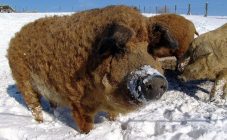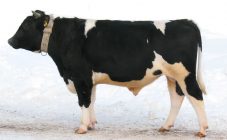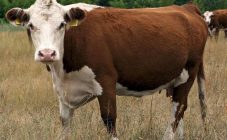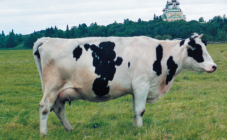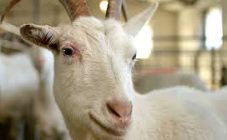Content:
The first mention of the valuable breed was dated 1802. Ordinary peasants living on the territory of Yaroslavl were engaged in large-scale breeding of valuable sheep. They owned local short-tailed breeds. Healthy specimens with excellent wool were selected for production.
Gradually, small lambs began to appear in animals with short tails, meeting the main criteria of sheep breeders - excellent fertility, high-quality wool, essential meat and excellent milk. For the first time, Romanov sheep were recorded on the territory of the Yaroslavl province, in the Romano-Borisoglebsk district, for which they got their name.
Appearance and characteristics
The Romanov breed of sheep has the following external characteristics:
- The growth of the animal at the withers reaches 65-70 cm;
- The body is barrel-shaped;
- The back and sacrum are straightened;
- Small head with an elongated muzzle;
- Nose with a characteristic hump;
- Vertical auricles;
- With a wide and deep chest;
- Muscular straight legs;
- The sheep may have small horns or be hornless;
- Romanov rams weigh up to 70, ewes - 55 kg;
- The hair on the face, ears and limbs is black, white spots on the legs are acceptable;
- The outer hair of the breed is black, and the downy hair is milky white, thanks to this color, the skin looks rough;
- Down hair is longer than guard hair.
The classification of these pedigree cattle begins according to the type of skeleton: a rough, normal and delicate type of skeleton is distinguished. A normal skeleton is suitable for sheep breeding, it has excellent shearing performance and excellent productivity. The coarse variety has increased endurance to harsh conditions, strong legs, the percentage of meat yield of this type is lower, and the skin is coarser and cannot be processed. They do not differ in good health.
Productivity
Romanov rams are considered to be a source of high quality sheep skins. According to experts, this type of sheepskin is one of the best in the world, it is evaluated according to parameters: lightness, appearance, thermal insulation qualities. The most valuable skin is given by individuals at the age of 8 months. The breed's wool is also prized for its antibacterial properties of lanolin.
Wool is an important industrial product. Shearing of individuals is carried out with a cyclicality three times a year, while making sure that molting does not affect the commercial properties of wool. The one-time volume of shearing is not so great: up to 3 kg from a ram comes out for a shearing, 1.5 kg from a sheep. Despite the value of the Romanov skin, sheep breeders keep animals for the sake of meat output, because the weight of an adult ram can reach 70 kg, and an adult sheep pulls by 40 kg. Slaughter meat yield of this breed is 50%.
Content
The variety is distinguished by its unpretentiousness to the conditions of detention. Throughout the spring, sultry summer and until the onset of autumn cold black sheep spend on a spacious pasture, easily getting their own provisions.They are fed by grass, moss, succulent leaves, cereals and legumes.
In the harsh winter time, the sheep are sent to the sheepfold, next to which they organize an equipped walking area, because in the fresh air the animals' appetite improves. This variety is not afraid of the onset of cold weather - in order to feel comfortable, it is necessary that the air temperature does not drop to +5 degrees. The sheep farmer needs to ensure that the grass bedding is always dry and clean. The sheep farmer also needs to install a ventilation system in an equipped sheepfold, because the accumulation of ammonia and dangerous hydrogen sulfide will have a detrimental effect on his breeding farm.
Otaru is timely protected from various misfortunes, following the vaccination schedule, animals are vaccinated, drinkers and feeders are disinfected. Twice a year, the flock is treated from harmful worms and other parasites that settle on the skin of the animal.
The diet
Being in the pasture, feeding on pasture, animals do not require supplementary feeding during this period. At the end of a hot summer, when there is a significant decrease in nutritional value in meadow grasses, farmers introduce additional components into their daily diet:
- They prefer to eat cereals - green rye, corn, sprouts of winter crops;
- Purebred sheep love silage corn with added oats;
- Fodder beets and carrots, a few young squash are present in the daily diet;
- They also need hay - only 4 kg for the entire period of stay in the sheepfold;
- They receive life-giving mineral supplements and salt every day.
Animals consume a lot of liquid - during a period of intense heat, one adult is able to drink up to 8 liters per day. Leading the flock to the daily watering place in the morning and in the evening, the shepherd must pick up clean reservoirs, because stagnant water is a source of destructive infections.
Breeding
Any novice farmer can handle the breeding of thoroughbred sheep. Breeding sheep is a profitable business. Given the excellent fertility and early puberty of animals - 4 months, young sheep are not allowed to mate, they are waiting for the achievement of one year of age. Experienced farmers plan mating at the end of summer or beginning of autumn.
The gestation period for sheep of this breed is up to 145 days. After lambing, the ewes will feed their offspring. She has excellent fat milk. Ewes for one feeding can give up to 150 liters of healthy milk, the maximum fat content of which reaches 8%. She is able to perform up to 3 lambing within two years.
Lamb in sheep of the Romanov breed
In the process of breeding breeding sheep, each farmer should know the characteristics of the lambing of ewes. This occurs at the end of a harsh winter and early spring, during this period the pregnant lamb behaves extremely restlessly. The farmer can identify the approaching lamb by the following signals:
- Swollen udder
- Sagging abdominal cavity;
- Enlarged genitals;
- When pressed, a few drops of colostrum are released.
4 days before the upcoming birth, the ewes are transferred to a specially designated place, given food and drink. Lambing in a sheep occurs without any particular difficulties; if the lamb is in the wrong position in the path, the farmer has to help in childbirth. It is better for a novice farmer to take lamb in conjunction with a veterinarian. Newborn lambs are collected in a special stall, sent to lactation every 3 hours.
